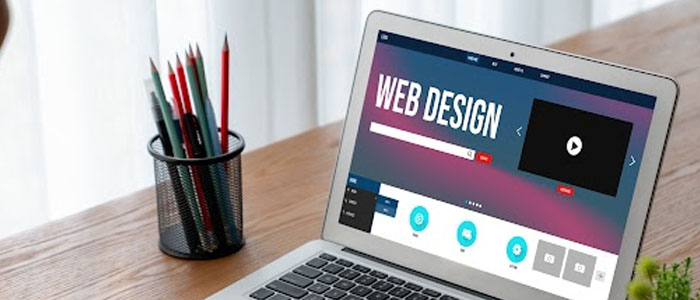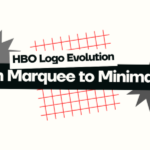Learning web design doesn’t have to be hard. If you’re curious about the basics and searching for it, we’ve got you covered with this simple guide that explains everything you need to know to begin.
- Get the hang of making things look good on the web.
- Learn the basic building blocks of web pages with HTML.
- Understand how to style your pages with CSS.
- Learn about making websites easy and enjoyable to use with UX design.
- Get to know UI design, which focuses on how things look and feel.
- Figure out how to arrange everything on a webpage with layouts.
- Explore the world of fonts and text styles with typography.
- Roll up your sleeves and start creating your own website.
- Find someone experienced who can guide you along the way.
With these steps, you’ll be well on your way to becoming a web designer!
What Is Web Design And Its Elements?
Web design is like putting together a puzzle that everyone can enjoy. It’s a mix of creativity and logic that makes websites not only look good but also work well.
Imagine you’re building a house with different pieces that include images, words, colors, and shapes. Web designers take all these pieces and arrange them on a webpage to make it easy for people to understand and use.
But it’s not just about making things pretty. Web designers also think about how users will move around the website. They want to make sure people can find what they need without getting lost.
There are different kinds of web designers, like those who focus on making things look nice (UI designers), those who focus on making things easy to use (UX designers), and those who make sure websites show up in search engines (SEO experts).
As you learn about web design, you’ll discover all these different parts and how they come together to create awesome websites!
Web Designs Are Powered By The Back End
When you’re learning web design, you’ll hear about two important parts, the back end and the front end. They do different jobs, so it’s good to understand how they’re different.
The back end is like the engine of a car it’s what makes everything work behind the scenes. When you visit a website, the back end is where all the data is stored and processed. It’s like the brain of the website, handling requests and sending out the right information to your browser. Get in touch with our 24/7 available representatives now!
Looking for an Affordable
Logo Design Services
Chat With us to avail 30% OFF
People who work on the back end are often programmers who use languages like PHP, Python, or Java. They make sure everything on the server side runs smoothly, like managing databases and applications.
As a web designer, you don’t have to be an expert in back-end stuff, but it’s helpful to know what it does. If you want to be a full-stack developer, though, you’ll need to focus deeper into back-end development.
The back end is like the backstage of a theater, it’s where all the behind-the-scenes action happens, like storing data and handling requests. The front end is like the stage, it’s what the audience sees and interacts with where all the fancy lights, sets, and actors (or in this case, HTML, CSS, and JavaScript) come together to create the show in the website.
As you get better at web development, you might start learning about fancier tools and techniques, like React or Bootstrap, which are like special effects that make the show even more impressive. But don’t worry about those too much when you’re just starting out, focus on getting comfortable with the basics first!
Visual Design Is The Key
Even though awesome websites look easy to make, they’re actually built on some important visual design rules. Some people are born with a natural talent for design, but for most of us, it’s something we gotta learn. Knowing what makes a design look good helps a ton when you’re learning web stuff.
Start by learning about visual design basics. Stuff like how to arrange things on a page, pick colors, and use shapes. There are cool concepts like reification and emergence to start which are considered fancy ways of saying how designs come together.
Furthermore, it’s cool to know the history of design. Seeing how design evolved over time helps you understand why things look the way they do now. There’s a bunch of neat stuff out there about the history of the design if you’re into it!
How To Learn Web Design (9 Key Steps)
1. Visual Design Understanding
Color is super important in web design. Knowing about the color wheel, which colors go together, and what emotions they bring out helps you make websites that look good and feel right. Whether it’s calming blues or energetic reds, understanding color theory makes you a better designer.
-
Lines
Lines are like the building blocks of a design. They’re everywhere, from the edges of letters to the borders around sections. Learning about lines helps you organize and balance your design.
-
Shapes
Shapes are the basic building blocks of visuals. There are three main shapes that include squares, circles, and triangles. Squares are solid and strong, circles are smooth and comfy, and triangles are bold and action-packed. Each shape gives off a different vibe and is used for different things, like blocks of content or buttons.
-
Texture
Texture makes things feel real. It’s like when you touch something and know if it’s rough or smooth. On websites, texture adds depth and interest. It can be as simple as a paper-like background or as fancy as colorful blur effects. Exploring different textures make your designs more fun and gives them a sense of touch.
-
Grids
Grids are like invisible rulers that help in keeping things tidy on a webpage. They’ve been around since the early days of design and are still super useful. Learning how to use grids helps you organize your content and make your designs look clean and professional.
2. Know The Basics Of HTML
HTML or Hypertext Markup Language, is like the blueprint for a website. It tells web browsers how to show everything, from text to pictures to menus.
HTML works with tags, which are like instructions for the browser. Tags control stuff like headings, paragraphs, links, and images. Pay attention to header tags like H1, H2, and H3 they’re not just for making text bigger, they also help organize your content and make it easier for search engines to find your site.
3. Understand CSS
CSS, or Cascading Style Sheets, is like the decorator for a website. It tells HTML elements how to look, like what font to use, how much space to have around them, and what colors to use. Learning CSS lets you make websites look cool and make them your own.
Learn The UX Design Foundations
UI and UX can sound alike, but they’re different. UX or user experience is like the magic that makes a website feel alive. It’s not just about how things look, but how they make people feel when they use the site.
Everything from colors to fonts to how things are laid out plays a part in UX. It’s all about making sure people have a smooth and enjoyable time using the site, while also connecting them with the brand or idea behind it.
So, while UI (user interface) focuses on how things look, UX is all about how they feel and work together.
1. User Personas
When you learn website design, it’s important to think about the people who will use your site. This means learning about them through research and creating imaginary “personas” to represent them. By knowing who your visitors are, you can design a website that meets their needs.
2. Prototyping
Prototypes are like mock-ups of your website that you can interact with. They let you see how everything will work together before you actually build the site. Prototypes are great for getting feedback and making improvements along the way.
3. Information Architecture
Think of information architecture like making a map for your website. It’s about organizing all the content and pages in a way that makes sense to visitors. This helps them find what they’re looking for without getting lost or frustrated.
4. Wire-frames
Wire-frames are like blueprints for your website. They show where everything will go like text, images, and buttons without getting into the details of how they’ll look. This gives you a clear plan to follow as you build your site.
5. User Flows
User flows are like drawing a path for visitors to follow on your website. It’s about thinking ahead to how people will navigate from one page to another. This helps you prioritize what’s important and make sure everything is easy to find.
6. Familiarize Yourself With UI Design
UI design is all about making technology easy to use. Think about everyday things like a doorknob, car radio buttons, or an ATM keypad, they’re all examples of user interfaces. In website design, UI elements like buttons and menus help people interact with the site, just like pressing buttons in the real world makes things happen. It’s about creating a design that’s intuitive and lets users do what they want smoothly.
7. Understand The Basics Of Creating Layouts
When we look at websites, our eyes follow certain paths without us even realizing it. It’s like how we automatically know where to look on a page because we’ve seen similar layouts before. Understanding these patterns helps you design websites that feel natural and easy to navigate. Two common layout patterns to know about are the Z-pattern and F-pattern. They’re like blueprints that guide how you arrange content and visuals on a page.
8. Learn The Art Of Typography
Fonts do more than just make words readable, they also set the mood and tone of a website. When you learn web design, it’s important to know how to choose and use fonts effectively. Good typography makes content easy to read, but it can also create feelings and vibes. Using different styles of fonts can add personality and style to a website, making it look more appealing.
9. Put Your Knowledge Into Action And Build Something
Learning about web design is great, but the real learning happens when you start building things yourself. Start small such as if a friend needs a website for their portfolio, or you could create a blog. These projects help you practice using tools like content management systems and showcase your skills. Another idea is to make a website for a fictional company, it’s a fun way to flex your design muscles and add to your portfolio. The key is to start designing and learning by doing!
10. Finding A Mentor
Having a mentor is like having a guide who’s been through what you’re going through and is willing to help you out. They’ve got loads of experience and knowledge to share. A mentor can give you feedback on your work, point out what you’re doing well, and help you improve.
When looking for a mentor, find someone whose design style you admire and who specializes in what you want to learn. They can show you the ropes and save you from a lot of trial and error in learning web design.
Some Last Words
Learning web design can be an exciting journey filled with creativity and skill development. By following the steps outlined above, you’ll gain a solid understanding of the fundamentals and be well-equipped to start designing your own websites. However, if you find yourself needing professional website design services, don’t hesitate to consider Logovent. Our team of experts is dedicated to bringing your vision to life and creating stunning websites that fulfill your needs. Get in touch with us today to boost your online presence!





